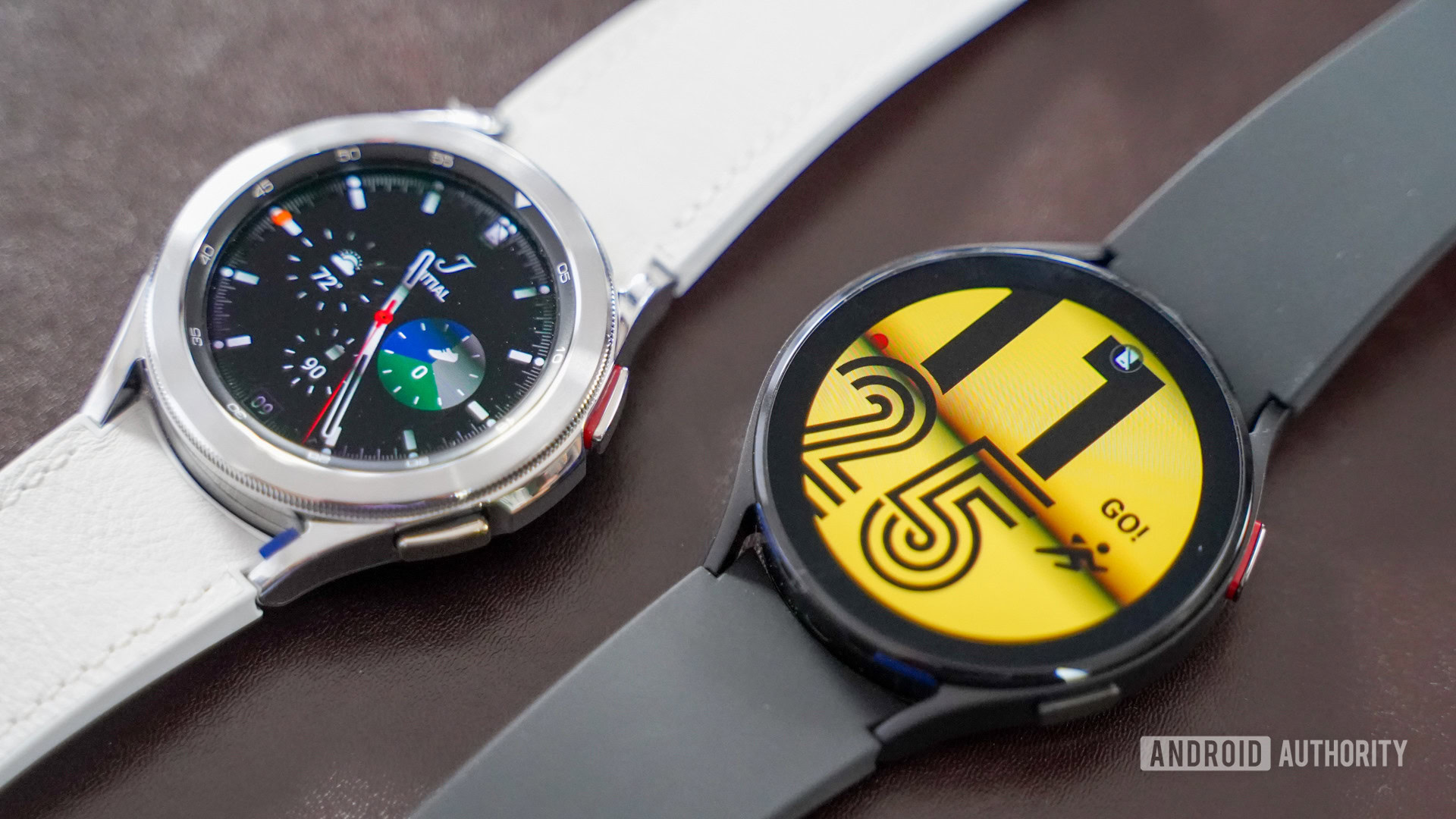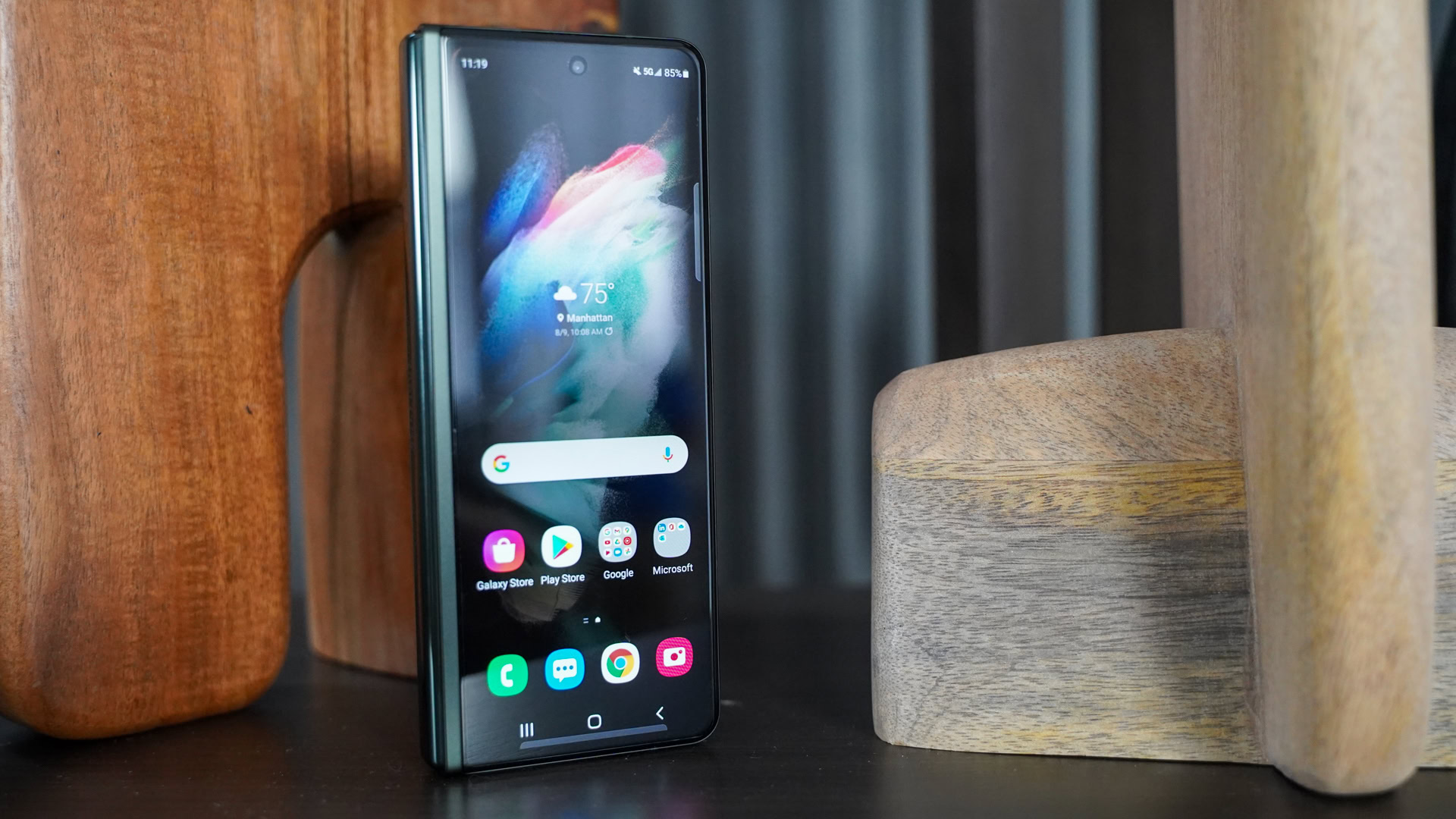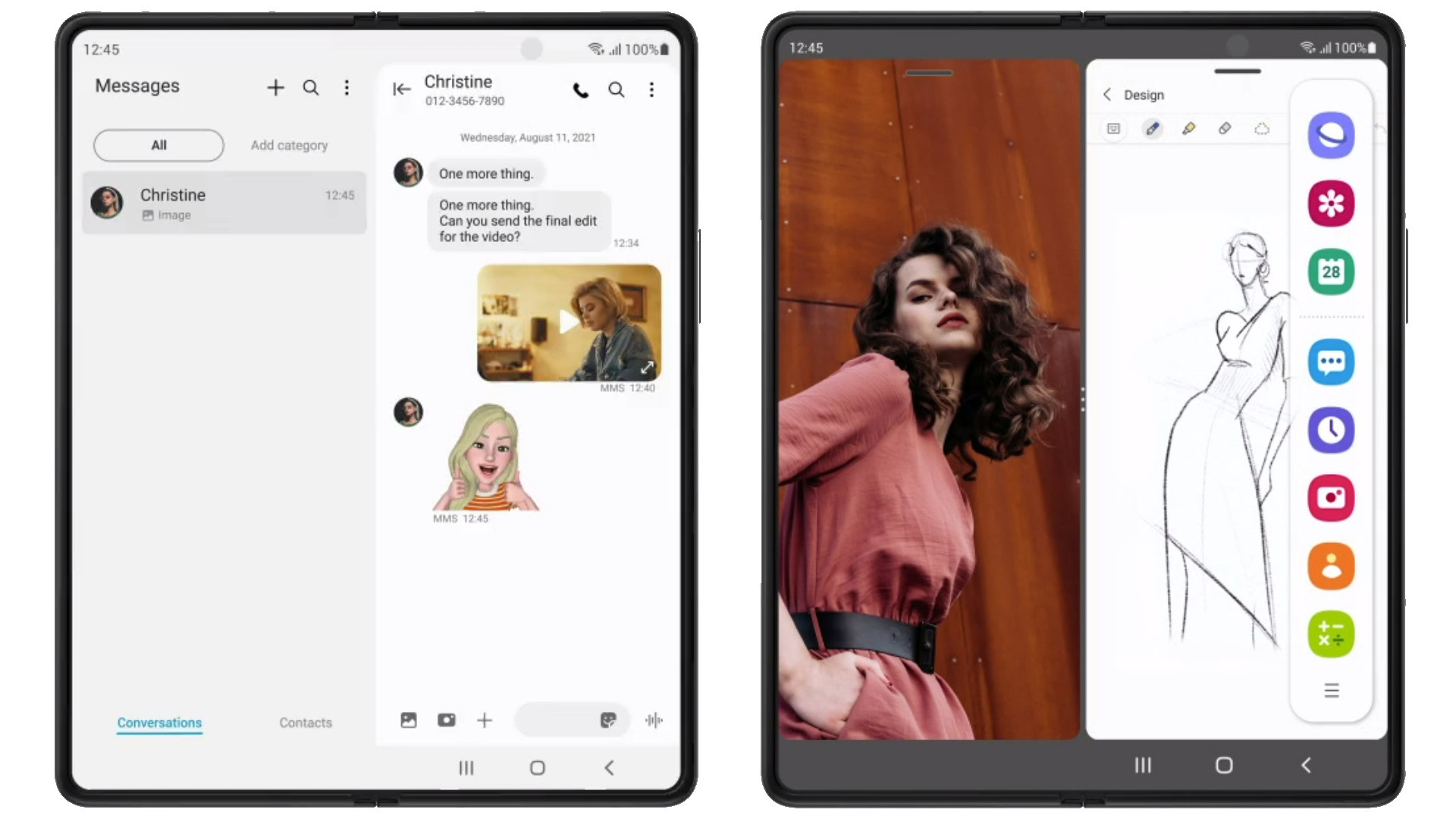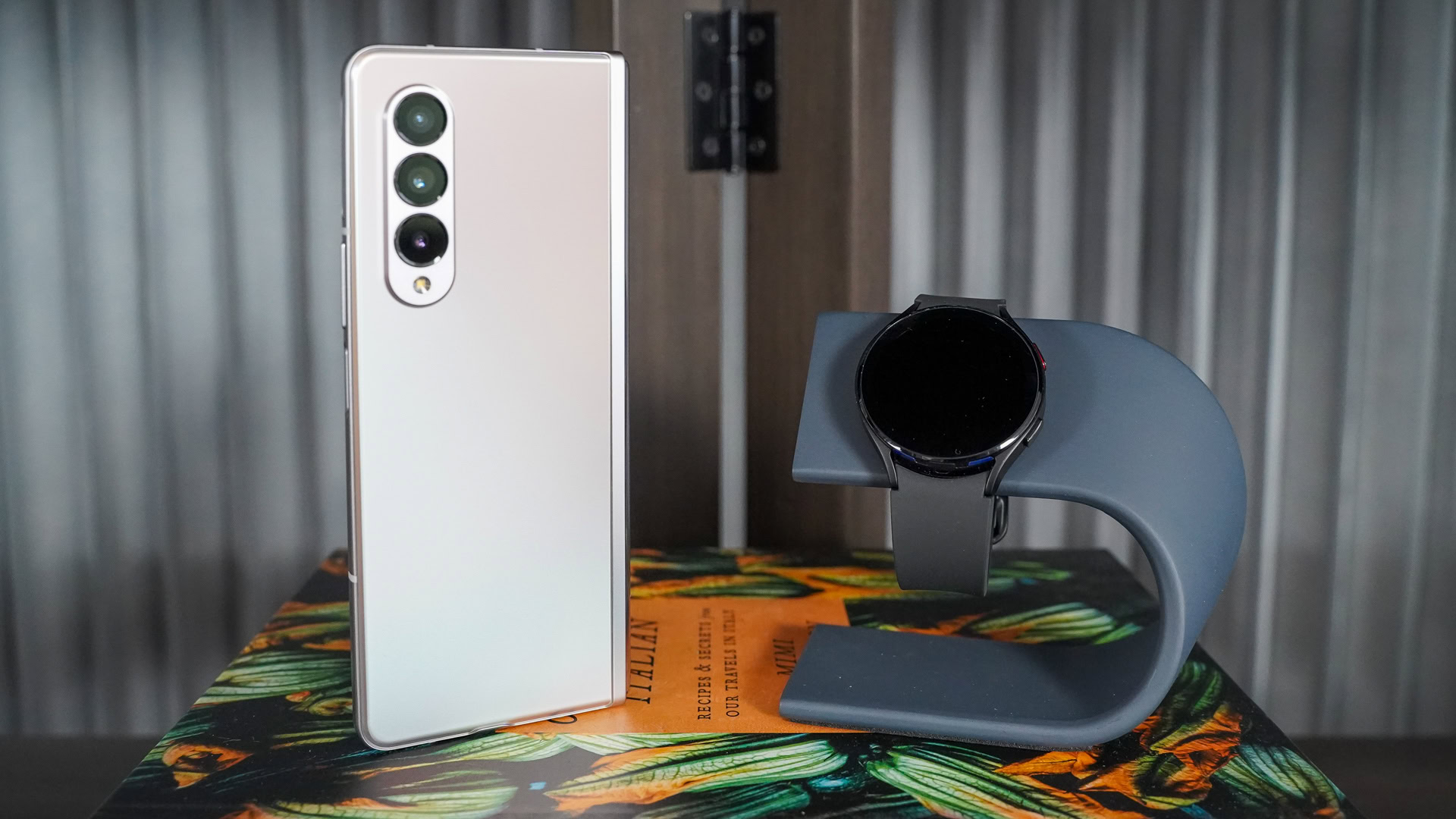Affiliate links on Android Authority may earn us a commission. Learn more.
Samsung's innovative streak is fighting an uphill battle with Android
Samsung Unpacked 2021 offered up a mouth-watering smorgasbord of cutting-edge gadgets, ranging from the Samsung Galaxy Z Fold 3 to the Galaxy Watch 4. But besides the bleeding edge hardware showcase, the launch highlighted the importance that software plays in driving product differentiation and supporting those all-important new user experiences that Samsung was so keen to draw our attention to.
Marketing guff aside, Samsung has clearly put a huge amount of work into software development in order to bring its latest products to market. The Galaxy Watch 4 and Watch 4 Classic, for instance, are the company’s first Wear OS smartwatches that ditch Samsung’s in-house Tizen operating system, for Wear OS 3 that it helped design in collaboration with Google. The Galaxy Z Fold 3 and Z Flip 3 look like the company’s best foldables yet, precisely because of the blend between improved hardware and software features that enable things as simple as moving apps between displays.
But what was most striking to me about Unpacked is that Samsung is virtually alone fighting an uphill battle with Android to make these innovative products a reality.
Dragging Wear OS into the modern age

It’s not controversial to say that Wear OS has been through some pretty rough times under Google’s leadership. Even after years of development, the user experience was left unrefined, underbaked, and missing key features found over at the ecosystem’s biggest rival — the Apple Watch. The poor battery life, dubious UI, and lack of flagship products and updates didn’t help sell consumers on the ecosystem either. It’s hardly surprising that many manufacturers, including Samsung, turned to other operating systems to build their wearables. Android Authority called the previous-gen Galaxy Watch 3 the best smartwatch for Android users, despite the lack of third-party support you’ll find in the Wear OS and Apple Watch ecosystems.
Wear OS 3 is built to tackle the platform’s long-running problems. It’s a dream team between Samsung’s arguably industry-leading watch user interface, Google’s wide app ecosystem, and Fitbit’s best-in-class fitness prowess. Together, this may finally give customers an Android watch ecosystem that offers everything they want. Although, we’ll reserve our verdict until we’ve spent more time with the Galaxy Watch 4. Not to mention that the platform’s long-term success will depend on Google keeping its act together for future improvements and updates.
Further reading: The best Wear OS watches | The best Wear OS apps
Of course, this begs the question of why it’s taken seven years for Google to allow its partners to customize the look of Wear OS and tackle long-standing issues like battery lifetime and app performance. Wear OS has so often felt like an afterthought for Google, verging on a nuisance it perhaps wished it had never become involved with. So credit to Samsung for innovating in the wearables space without the developer community that comes with Google’s app ecosystem. But this journey would have been a whole lot smoother if Google had invested heavily in Wear OS development years ago.
Android needs to marshal exciting new devices

It’s hard not to draw parallels between Samsung’s smartwatch journey and that of its foldable smartphones. Samsung’s Flip and Fold products are innovating ahead of the mainstream Android market and once again it’s putting in the extra software legwork. Software like Multi-View, seamless Immersive View, and Multitasking enable users to make the most of the Z Fold 3’s additional screen real-estate. But really these are necessary features to take foldables beyond traditional handsets and into a product category of their own. Even so, Samsung is limited by what it can provide with its own apps and those that third-party developers explicitly support for these devices.
Granted, Android 10 introduced support for resizable app windows, hinge aspects, and improved multi-window for three or more apps that specifically suit these new products. Google has certainly made Android friendlier to devices with odd screen layouts and has even improved its own apps like YouTube and Google Duo to use multiple displays. But even here, Samsung was driving Android’s direction of development.
Google has long been happy for its partners to lead the way with features it eventually folds into Android.
Under Google’s stewardship, there haven’t been any key foldable advancements to the mobile OS since then. Android 12 is mostly concerned with reskinning the UI, bolstering notifications, and adding new privacy features. Hardly cutting edge stuff.
That’s not entirely surprising though. Google has long been content to let its partners lead the way and incorporate successful features into Android at a later date. But wait and see is a riskier strategy to take with a revolutionary and potentially breakout product segment.

Samsung’s foldables do more than resize and stack apps to provide the fluid experience that premium consumers expect. For example, Samsung’s edge panel taskbar bridges the productivity gap between smartphones and tablets, while Flex Mode makes use of the Galaxy Z Flip’s more novel aesthetics. These are key features that have taken Samsung’s foldables from concepts to fully-fledged devices. Not to mention its proprietary messaging, camera, and other apps that are built to maximize the screen space.
The Android OS may support the essentials and give developers some new tools to play with, but it’s custom software that’s fleshing out these products to really make them work. Sadly, Android’s core support for foldables isn’t pushing the envelope, repeating the strategy that failed to galvanize Android tablets and, until recently, wearables.
Google can’t lead from the back

Of course, Samsung isn’t the only one building foldable smartphones. We quite like the HUAWEI Mate XS experience too, although the lack of Google apps remains a glaring caveat. While multiple companies working on their own propriety ideas might produce some good individual products, it won’t lead to the diverse and competitive ecosystem that we currently enjoy for Android smartphones. That can only happen if Google gets ahead of the game and takes an active role in integrating cutting-edge foldable features into its OS. In addition to the existing developer tools to build foldable-aware applications.
This is hugely important because third-party apps need to support common feature sets if we want them to work seamlessly across products from multiple brands. Not to mention that Apple is rumored to have its own folding iPhone in the works. Apple won’t come to this product segment with half-cocked software, and a wait-and-see approach could cost the Android foldables ecosystem its hard-earned head start.
Android’s core support for foldables isn’t pushing the envelope, repeating the strategy that failed to galvanize tablets and wearables.
The sooner Google bakes more core flexible and foldable software features and tools into Android, the more likely it is that foldable handsets will take off in a meaningful way for mainstream consumers. The rumored Google Pixel Fold suggests that the company may be about to take the product segment under its wing. Although based on the company’s history with tablets, TVs, and wearables, I’m not holding my breath that Google will lead from the front. Not unless a company like Samsung can force its hand once again, but until then Samsung and others are fighting an uphill battle to innovate.